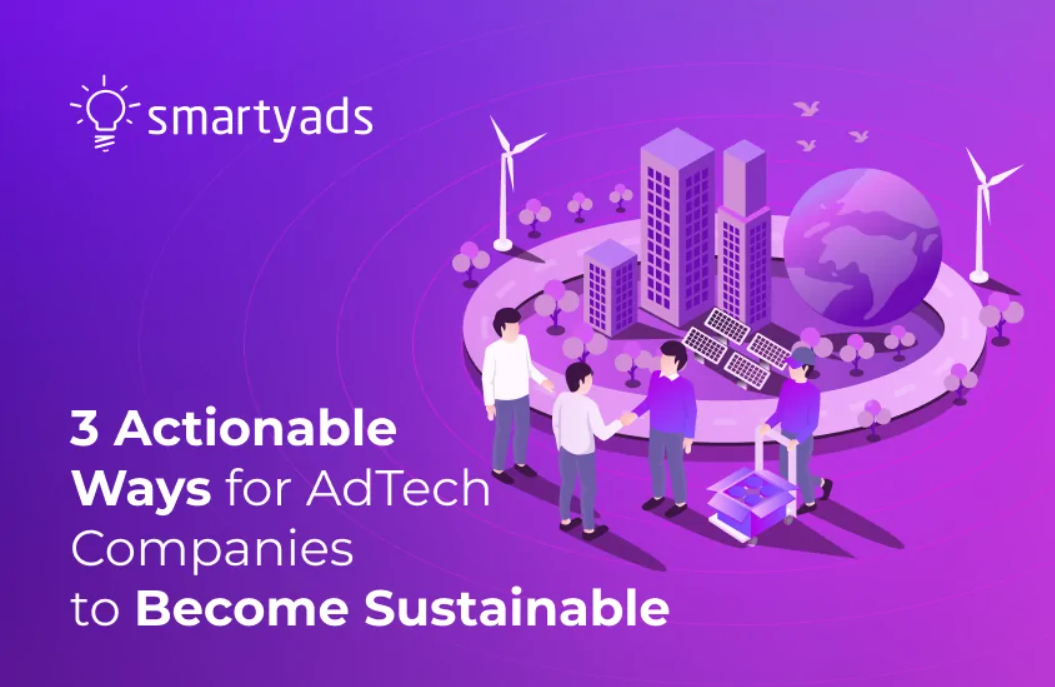The positive effects of the digital age on the environment are frequently emphasized: fewer commutes, less need for air travel, and many instances of technology assisting us in better use of natural resources.
You should know that Internet usage leaves a carbon footprint of 1.6 billion tons of greenhouse gases annually.
A single ad campaign generates 70 tons of CO2 equivalent emissions.
The environmental impact of advertising arises from various factors like ad production and delivery, media buying, and the energy consumption of digital infrastructure.
As a result, some companies, like Good-Loop, have created carbon calculators that enable customers to determine the carbon footprint of advertising campaigns.
For instance, serving 100,000 impressions of a 10 MB video creative – a fairly small-scale campaign – generates more than half a ton of CO2. That is equivalent to flying from New York to Los Angeles or driving 2,000 miles in a gasoline-powered car.
Although imperfect, calculators are a useful first step in bringing the environmental impact of digital advertising and emphasizing the need for a transition to a more sustainable ecosystem.
So, let’s focus on the actionable ways to improve sustainability in AdTech.

More Sustainable AdTech – 3 Industry Initiatives
Below you can see three ways that AdTech players contribute to the industry's sustainability.
Ad Net Zero
Ad Net Zero is a UK-based industry-wide initiative that seeks to reduce digital media's net carbon emissions to zero by 2030.
Ad Net Zero's five-point plan aims to reduce emissions from advertising production, media buying, consumer behavior, and even awards and events.
Ad Net Zero will also increase transparency by generating publicly accessible reports on carbon emissions through the digital advertising ecosystem.
Ad Net Zero was established by collaborating with industry players like the IAB, Google, Meta, the Advertising Association, and WPP.
Below you can see some initiatives among AdTech players supporting Ad Net Zero:
PubMatic, Publicis, GroupM, Havas, and Dentsu are among the over 80 companies that joined the global group of the climate action initiative Ad Net Zero’s global group in 2022.
WPP announced a net-zero carbon emissions commitment on Earth Day 2021.
GroupM created a media decarbonization coalition to develop industry-wide measurement standards for carbon emissions resulting from advertising.
The commitment to reduce greenhouse gas emissions has been embraced by thousands of organizations who have joined the Science Based Targets initiative (SBTi).
Dentsu and SBTi devised a plan to accomplish a net zero by 2040.
Good-Loop
Good-Loop is a UK-based startup that develops technology to aid advertisers in adhering to their sustainability commitments and donating to charity.
Good-Loop provides an eco-friendly ad tag that calculates the carbon generated by digital ad campaigns.
However, its main product is a programmatic pre-roll video player that allows users to initiate a charitable donation sponsored by the advertiser in return for watching or engaging with an ad.
For instance, HP company collaborated with Good-Loop on a campaign to advertise its sustainability efforts.
HP has responsibly obtained three million tons of ocean-bound plastic that would have otherwise polluted our oceans. This sustainable approach has been implemented in producing their Dragonfly laptop, Elite c1030 Chromebook, and other merchandise.
With Good-Loop, HP successfully raised over $100,000 in donations to aid their sustainability partners, including the Ocean Conservancy and 1% for the Planet. This nonprofit organization facilitates connections between businesses and environmental organizations.
Scope 3
Scope 3 refers to a category of greenhouse gas emissions encompassing indirect emissions produced by an organization's value chain.
These emissions represent a substantial portion of an organization's carbon footprint and require collaboration and engagement with external stakeholders to solve them effectively.
For instance, market leaders like Microsoft have developed the Emissions Impact Dashboard, considering that most emission tracking models are ineffective and based on industry averages rather than user data.
This innovative solution enables customer-specific tracking of Scope 3 emissions on the Azure Cloud platform, providing more accurate and tailored insights.
Moreover, Scope3 is creating benchmarks to allow advertisers to track the carbon footprint of their campaigns through all inventory.
Steps to cleaner advertising
Begin with a measurement. Before setting business goals, it's essential to understand the current carbon impact. Tools like the Good-Loop calculator, as mentioned above, can be employed to assess and quantify the carbon footprint.
Improve viewability control. The ad clutter boosts carbon emissions.
Research suggests that people stop paying attention when three or more ads are displayed on a screen.
Ad formats are crucial. For instance, video requires more resources and energy than other ad formats. However, when evaluating the carbon footprint, companies can consider that video tends to generate fewer carbon emissions per attentive second.
As a result, brands may need to invest more in video ads and eliminate uninteresting ads that no one watches.
Additionally, improving the management of viewability is an effective method for reducing zero-value impressions, which boosts carbon footprint.
DoubleVerify is a leading company in viewability monitoring. The platform allows regular viewability measurement throughout channels, formats, and devices, enabling advertisers to stop paying for unviewed impressions.
Improve the data infrastructure. The server utilizes 70% of its energy even when inactive, boosting the infrastructure's carbon footprint.
Therefore, you must optimize your computing resources.
It can be possible across autoscaling, supported by key cloud providers like Amazon EC2 Auto-Scaling and Microsoft Azure VM.
Another method for reducing resource consumption is optimizing data storage.
There are several data storage optimization strategies that technical teams may investigate. Even small adjustments, like migrating to a high-performance database management system, can improve data management efficiency.
Optimize working habits. For instance, remote work has the greatest impact on the environment during the winter, when multiple apartments must be heated instead of a single, open-space room.
For this reason, business owners can encourage their employees to go to the office during the winter but to work from home when the weather is optimal.
During the summer, you can organize employee transportation to work by operating multiple vehicles, thereby reducing the carbon footprint created if employees drive themselves.
Additionally, one air conditioner cools the office using less energy than if each employee uses their own.
Enhance retail experiences. Brands may provide recycled and eco-friendly packaging as an alternative to plastic.
It would be prudent to combine all items delivered to the same client into a single package rather than in separate packages.
As a result, delivery companies like UPS and FedEx may reduce the carbon footprint created by their delivery vehicles.
Wrapping Up
It is essential to recognize the environmental footprint of digital marketing and strive for a more sustainable ecosystem.
Moreover, AdTech players have wider toolsets than anyone in the industry to make proactive changes. They can accomplish their sustainability journey from three perspectives: Ad Net Zero, Good-Loop, and Scope 3.
By implementing these actionable strategies, AdTech companies can create a greener and more sustainable future for the digital marketing industry.
While providing effective advertising solutions, the industry can positively impact the environment through collaborative efforts and ongoing innovation.
At SmartyAds, we actively participate in various industry events and strive to stay abreast of all trends, including sustainability. SmartyAds develops a healthy and trustworthy programmatic advertising ecosystem.
Moreover, it fosters enhanced processes and reduces its environmental footprint, contributing significantly to a more environmentally and socially responsible future.





